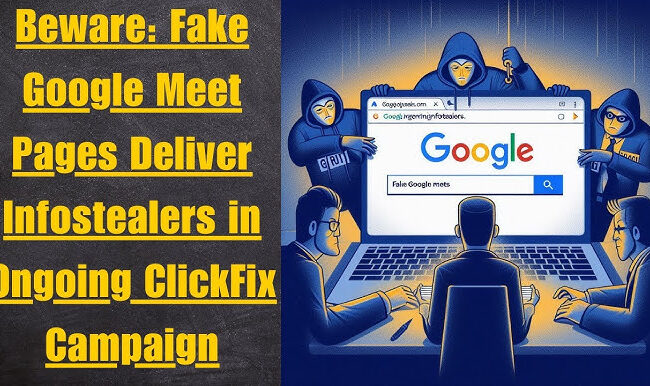Tag: cybersecurity
In today’s digital age, phishing scams and fake websites have become prevalent tactics used by cybercriminals to deceive individuals and steal their personal and financial information. Identifying these scams can feel daunting, especially with fake…
The U.S. Cybersecurity and Infrastructure Security Agency (CISA) has added a serious vulnerability affecting ScienceLogic SL1 to its Known Exploited Vulnerabilities (KEV) catalog, following reports of ongoing zero-day exploits. This critical flaw, identified as CVE-2024-9537…
Threat actors are exploiting counterfeit Google Meet web pages as part of a malware campaign known as ClickFix to deliver infostealers targeting both Windows and macOS systems. According to a report from French cybersecurity firm…
Stay informed with the latest global cybercrime news curated by Future crime Researchers. This briefing highlights recent digital fraud incidents and offers insights into effective mitigation strategies. 1. WazirX Exchange Faces Cybersecurity Challenges; Partial INR…
Urgent Mitigation Measures Mandated by CISA for Federal Agencies In a significant development, the Cybersecurity and Infrastructure Security Agency (CISA) has issued the first emergency directive of the year, mandating Federal Civilian Executive Branch (FCEB)…
In a concerning development, cybersecurity researchers have recently uncovered modified versions of WhatsApp for Android, equipped with a spyware module named CanesSpy. These modified WhatsApp applications are being distributed through dubious websites advertising these modded…
In a big move against online crooks, India’s Central Bureau of Investigation (CBI) recently took down cybercrime operations. They called it “Operation Chakra-II.” This operation was a joint effort with other countries and tech giants…
A zero-day vulnerability in Cisco’s Adaptive Security Appliance (ASA) firewall has been exploited to implant a malicious Lua backdoor on thousands of devices worldwide. The vulnerability, tracked as CVE-2023-20273, allows for privilege escalation through the…
The festive season is upon us, and with it comes the joy of online shopping for many. E-commerce companies are running sales, offering attractive discounts on everything from clothing to electronics. However, it’s essential to…
In a shocking turn of events, on October 10, 2023, a hacker claimed to have accessed millions of users’ information from the popular DNA testing company, 23andMe. This breach has raised concerns about the safety…






